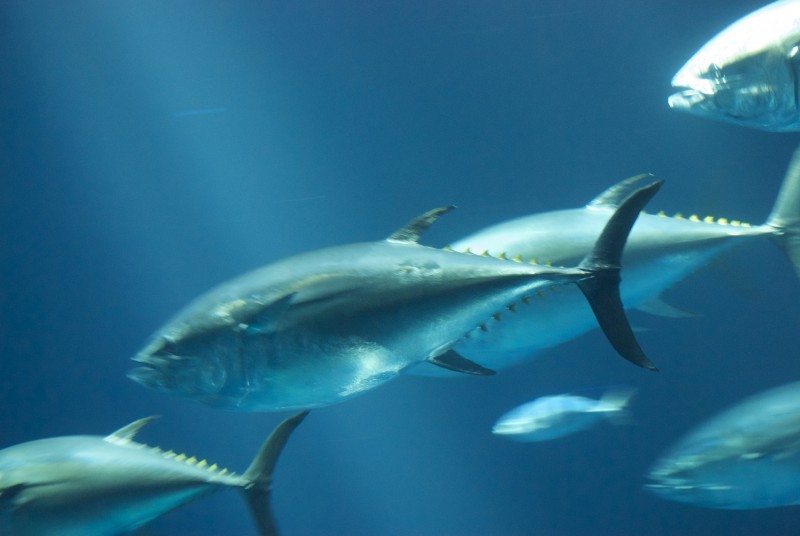Thunnus Albacares
Yellowfin tuna are named for their bright yellow finlets, and dorsal and anal fins. This large tuna species can be black, dark blue or greenish on top with a yellow or silver belly.

Biology
Yellowfin tuna can be found in all tropical and subtropical seas except the Mediterranean. They migrate long distances throughout the year.
Yellowfin tuna usually measure about 6.8 feet in length and weigh up to 440 pounds.
This species forages and feeds on crabs, squid, octopus, shrimp, lobster, and various species of fish. They prey using their sight and compete with many other large fish for food.
Spawning occurs throughout the year with the peak during summer months. After mating, eggs are released into the water and fertilized externally.
Yellowfin tuna are very fast swimmers and can reach speeds of 50 mph by folding their fins into special indentations.
Yellowfin are strong schoolers, often swimming in mixed schools of similar sized species. In the eastern Pacific Ocean, larger yellowfin are often found schooling with dolphins.
Yellowfin tuna usually live for 8 years.
Threats
Yellowfin have some natural predators including sharks and large bony fish.
The most serious threat to yellowfin tuna is the commercial fishery. This species is a popular target and the mode of catch (purse seine) can capture huge schools at a time. In the U.S., yellowfin tuna is one of the primary fish for canned consumption.
The tuna fishery has long been controversial for its high rates of dolphin bycatch; however, regulation has improved adverse impacts to dolphins.
Yellowfin are also sport-fished in southern California, Baja, Mexico, Hawaii, and along the southeastern U.S. including the Gulf of Mexico.
